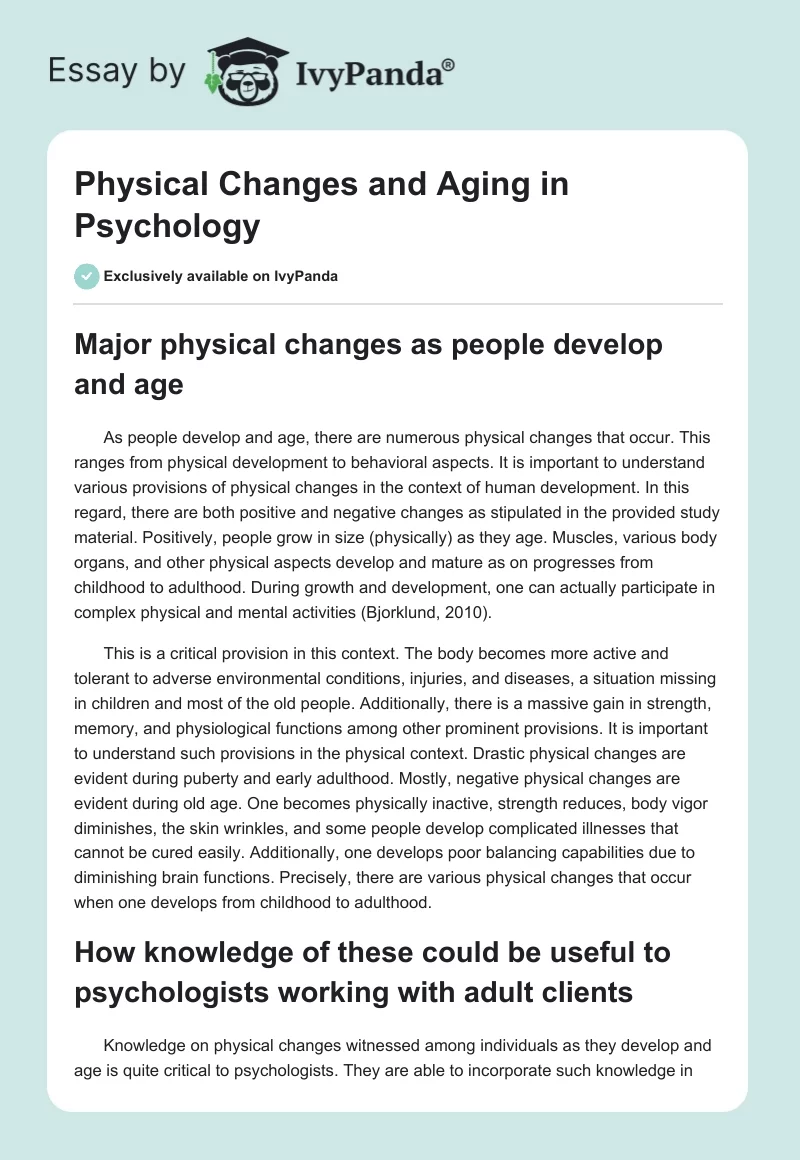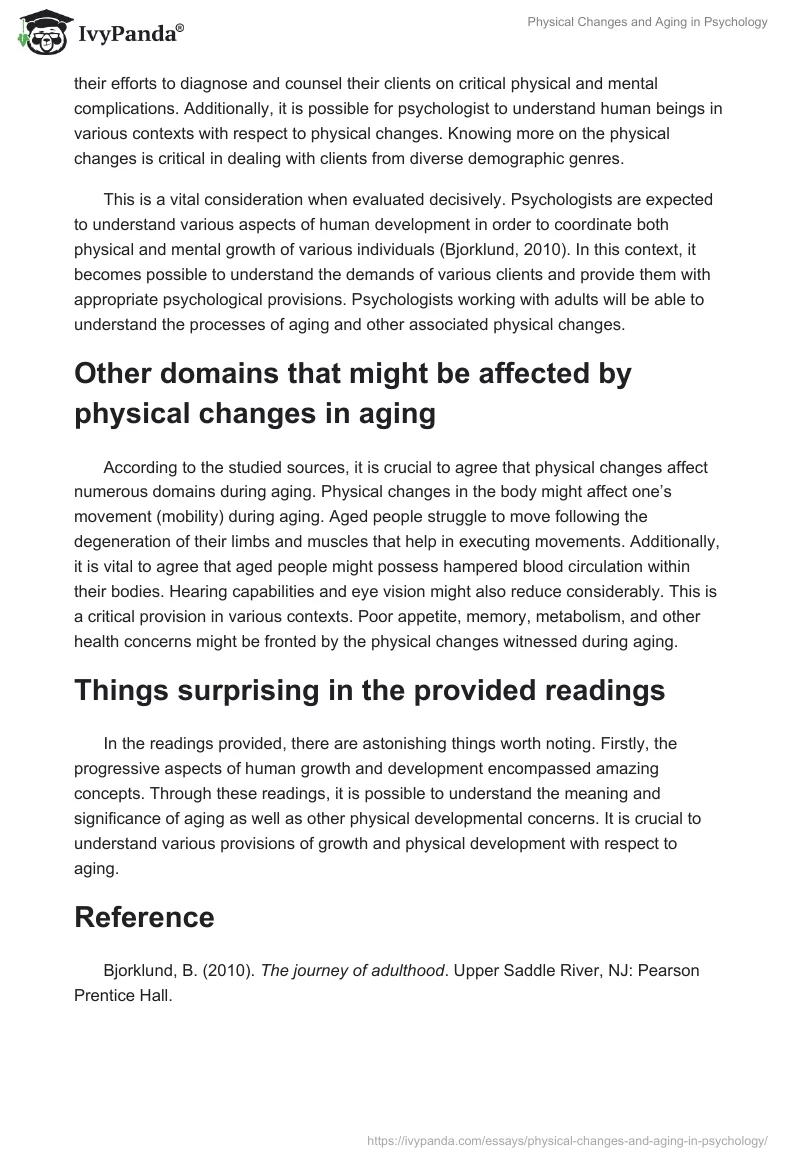Major physical changes as people develop and age
As people develop and age, there are numerous physical changes that occur. This ranges from physical development to behavioral aspects. It is important to understand various provisions of physical changes in the context of human development. In this regard, there are both positive and negative changes as stipulated in the provided study material. Positively, people grow in size (physically) as they age. Muscles, various body organs, and other physical aspects develop and mature as on progresses from childhood to adulthood. During growth and development, one can actually participate in complex physical and mental activities (Bjorklund, 2010).
This is a critical provision in this context. The body becomes more active and tolerant to adverse environmental conditions, injuries, and diseases, a situation missing in children and most of the old people. Additionally, there is a massive gain in strength, memory, and physiological functions among other prominent provisions. It is important to understand such provisions in the physical context. Drastic physical changes are evident during puberty and early adulthood. Mostly, negative physical changes are evident during old age. One becomes physically inactive, strength reduces, body vigor diminishes, the skin wrinkles, and some people develop complicated illnesses that cannot be cured easily. Additionally, one develops poor balancing capabilities due to diminishing brain functions. Precisely, there are various physical changes that occur when one develops from childhood to adulthood.
How knowledge of these could be useful to psychologists working with adult clients
Knowledge on physical changes witnessed among individuals as they develop and age is quite critical to psychologists. They are able to incorporate such knowledge in their efforts to diagnose and counsel their clients on critical physical and mental complications. Additionally, it is possible for psychologist to understand human beings in various contexts with respect to physical changes. Knowing more on the physical changes is critical in dealing with clients from diverse demographic genres.
This is a vital consideration when evaluated decisively. Psychologists are expected to understand various aspects of human development in order to coordinate both physical and mental growth of various individuals (Bjorklund, 2010). In this context, it becomes possible to understand the demands of various clients and provide them with appropriate psychological provisions. Psychologists working with adults will be able to understand the processes of aging and other associated physical changes.
Other domains that might be affected by physical changes in aging
According to the studied sources, it is crucial to agree that physical changes affect numerous domains during aging. Physical changes in the body might affect one’s movement (mobility) during aging. Aged people struggle to move following the degeneration of their limbs and muscles that help in executing movements. Additionally, it is vital to agree that aged people might possess hampered blood circulation within their bodies. Hearing capabilities and eye vision might also reduce considerably. This is a critical provision in various contexts. Poor appetite, memory, metabolism, and other health concerns might be fronted by the physical changes witnessed during aging.
Things surprising in the provided readings
In the readings provided, there are astonishing things worth noting. Firstly, the progressive aspects of human growth and development encompassed amazing concepts. Through these readings, it is possible to understand the meaning and significance of aging as well as other physical developmental concerns. It is crucial to understand various provisions of growth and physical development with respect to aging.
Reference
Bjorklund, B. (2010). The journey of adulthood. Upper Saddle River, NJ: Pearson Prentice Hall.


